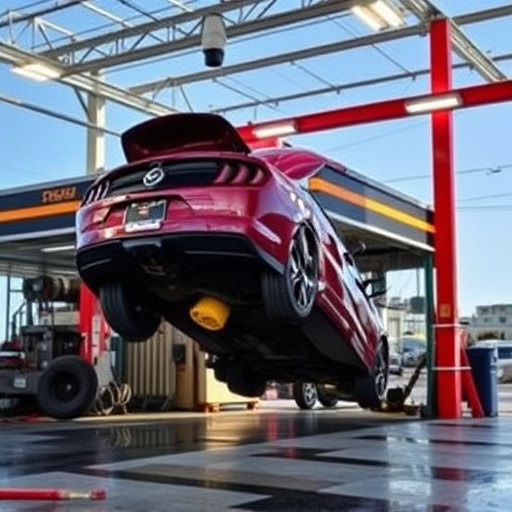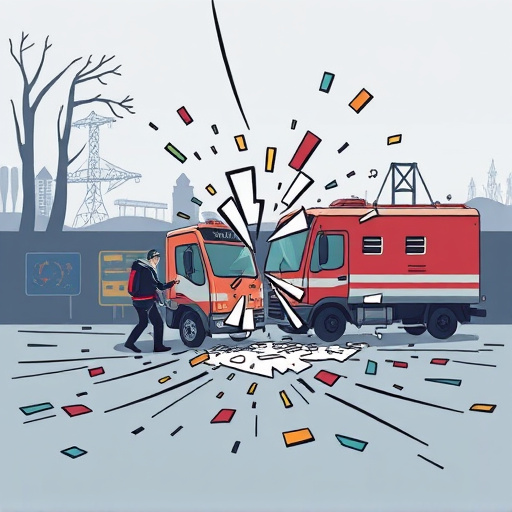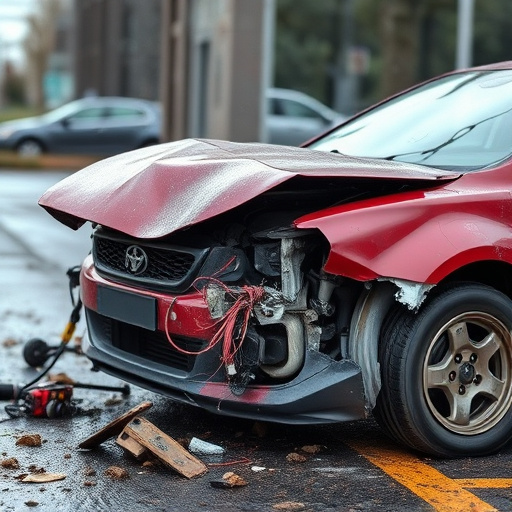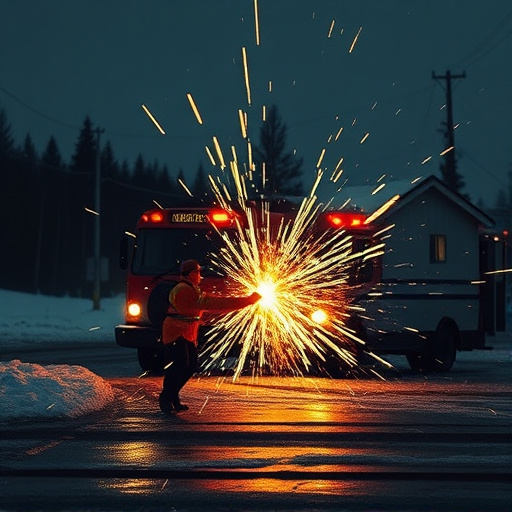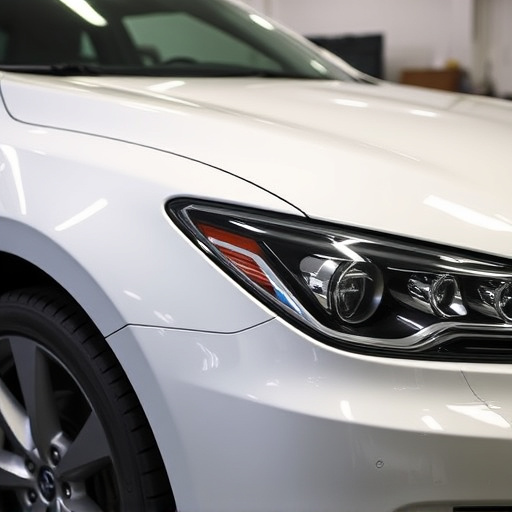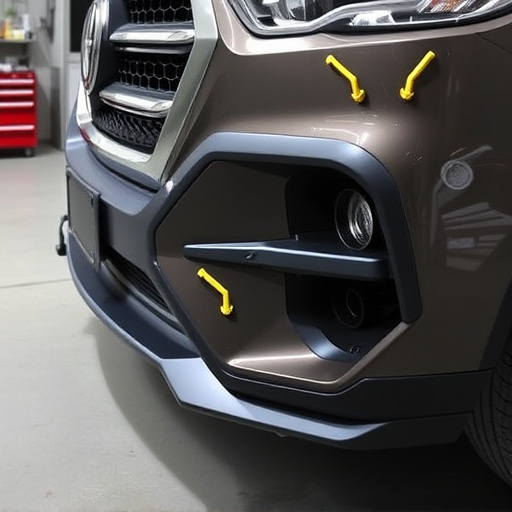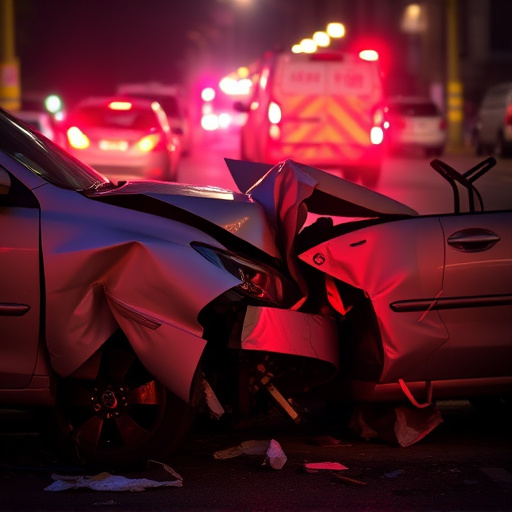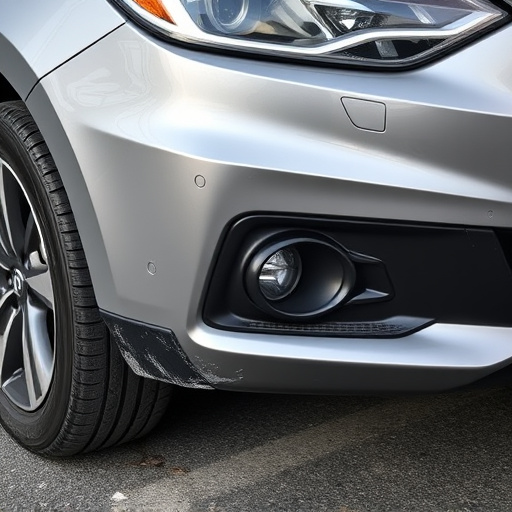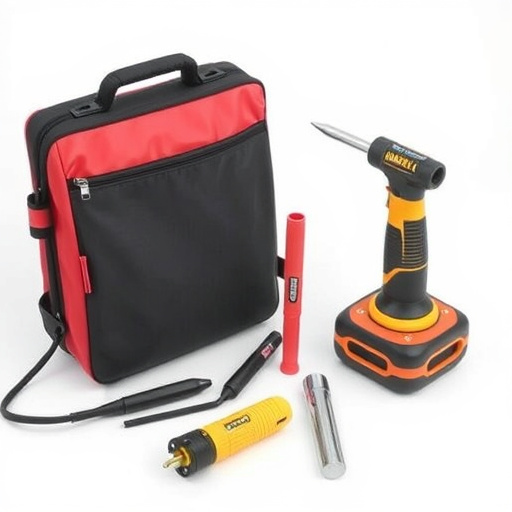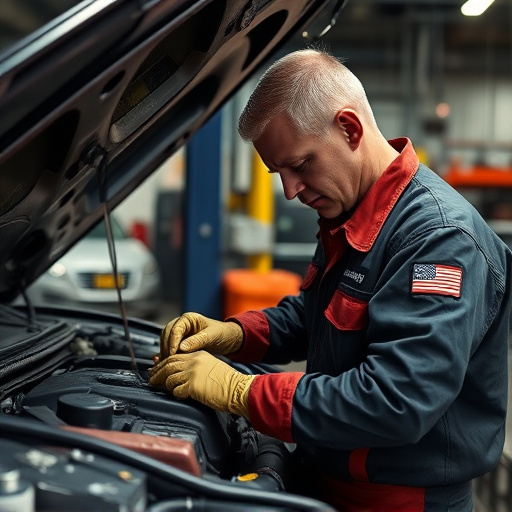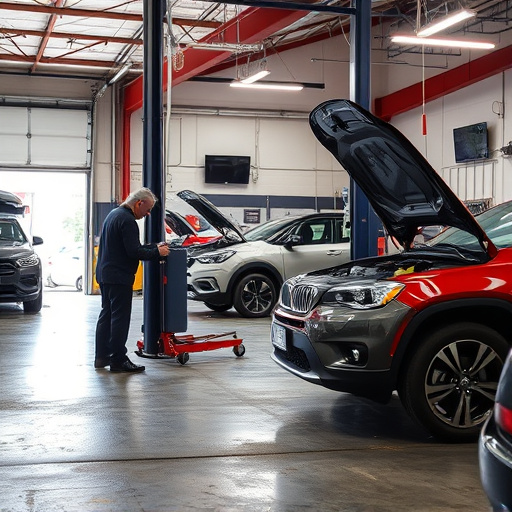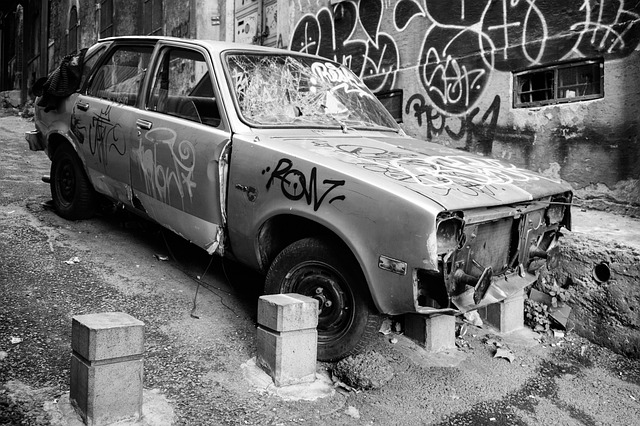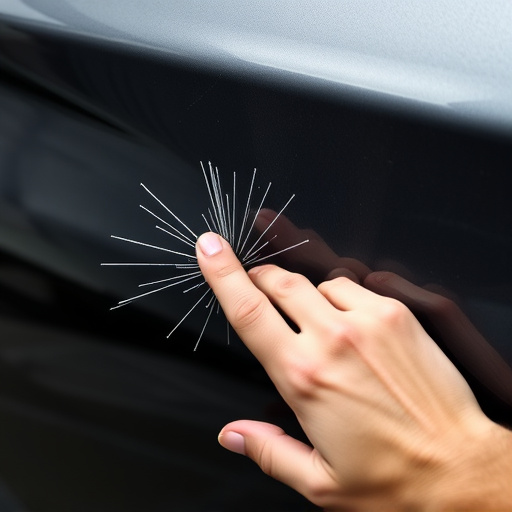Minor collisions can cause hidden damage to exhaust systems, affecting performance and emissions. Specialized repair services inspect and fix headers, mufflers, and tailpipes, ensuring safety and optimal vehicle operation through a multi-step process that includes inspection, disassembly, precise repairs, testing, and reinstallation, adhering to strict standards.
After a collision, your vehicle’s exhaust system could be damaged, posing safety risks. This article guides you through what to expect from exhaust system collision repair. We’ll explore how to identify common types of damage, break down the repair process step-by-step, and emphasize the importance of quality and safety in post-collision repairs. By understanding these aspects, you can ensure your vehicle returns to peak performance after a crash.
- Understanding Exhaust System Damage After Collisions
- The Repair Process: Step-by-Step Breakdown
- Ensuring Quality and Safety in Post-Collision Repairs
Understanding Exhaust System Damage After Collisions
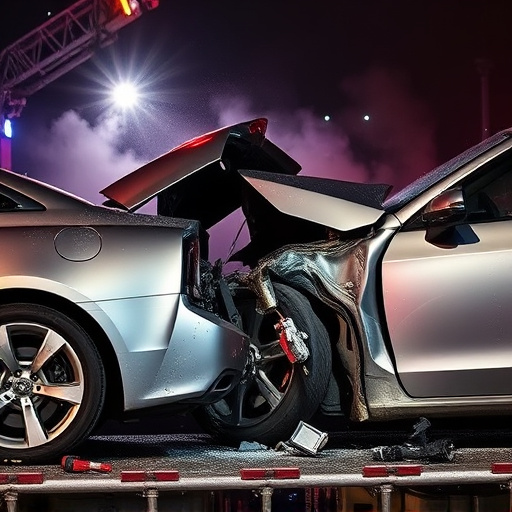
After a collision, especially a fender bender, understanding exhaust system damage is crucial for effective exhaust system collision repair. While external impacts might not immediately reveal significant issues, internal components can be affected. The exhaust system, being vital for vehicle performance and emissions control, requires meticulous attention during the repair process. Damage can manifest in various forms, from dents and cracks in the piping to compromised welds or even separation of components.
Automotive repair services specializing in exhaust system collision repair will inspect the entire system, including headers, mufflers, and tailpipes, for any signs of stress or weakness. Even a seemingly minor vehicle dent repair could impact the structural integrity of the exhaust system if not addressed properly. Therefore, it’s essential to consult professionals who can accurately assess and rectify these issues, ensuring both safety and optimal vehicle performance after the repair.
The Repair Process: Step-by-Step Breakdown
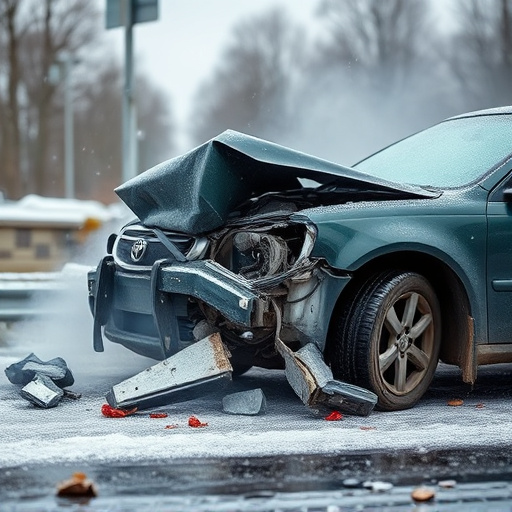
The exhaust system collision repair process involves several meticulous steps to ensure safe and effective restoration. It begins with a thorough inspection to identify any damaged components, from holes in the muffler to bent pipes. Technicians use advanced diagnostic tools to assess the extent of the damage, ensuring no hidden issues go unnoticed.
Once the assessment is complete, the repair team disassembles the affected parts carefully. This may include removing the exhaust system, catalytic converter, or any other components that require attention. Next, they address the damage with precise techniques: welding, replacement parts installation, and tightening connections to meet safety standards. After the repairs, a final test run is conducted to verify the exhaust system’s functionality and ensure it operates efficiently, with no leaks or performance issues, before reinstalling it onto the vehicle. This step-by-step approach guarantees that collision damage repair on the exhaust system is performed with precision, catering to both safety and performance.
Ensuring Quality and Safety in Post-Collision Repairs
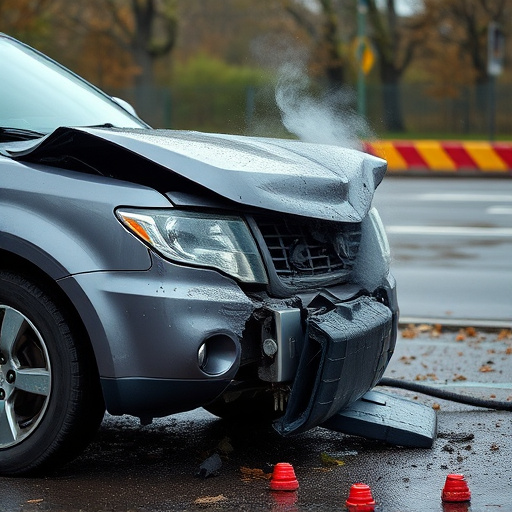
When it comes to exhaust system collision repair, ensuring quality and safety should be the top priority. This critical component of your vehicle’s infrastructure directly impacts engine performance and emissions. Repairs must adhere to strict standards to maintain proper airflow and prevent future issues. Skilled technicians employ precision techniques to replace or repair damaged parts, guaranteeing that the exhaust system functions optimally after the collision.
Proper repairs extend beyond just fixing visible damages; they encompass structural integrity and environmental compliance. Qualified mechanics not only address noticeable dents or crumple zones but also inspect for hidden damage that could compromise the car’s bodywork or cause long-term problems. This meticulous approach, which considers both aesthetics and functionality in autobody repairs, is vital to restore your vehicle to its pre-collision condition while prioritizing safety on the road.
When it comes to exhaust system collision repair, understanding the damage, knowing the repair process, and prioritizing quality and safety are key. By following these guidelines, you can ensure that your vehicle’s exhaust system is restored to its pre-collision condition, maintaining both performance and safety on the road. Remember, a well-executed exhaust system collision repair is not just about fixing metal; it’s about getting your vehicle back to its reliable, efficient self.
